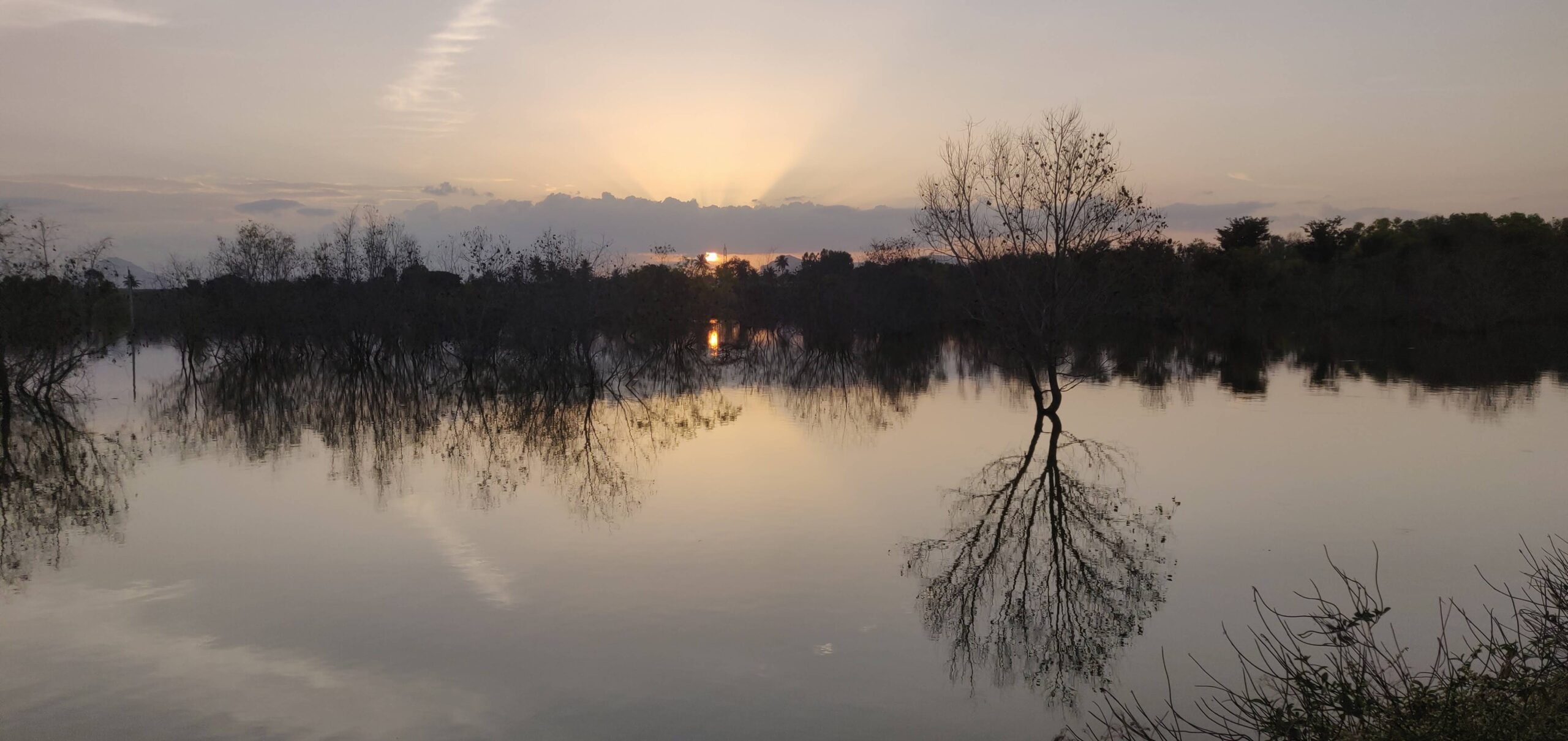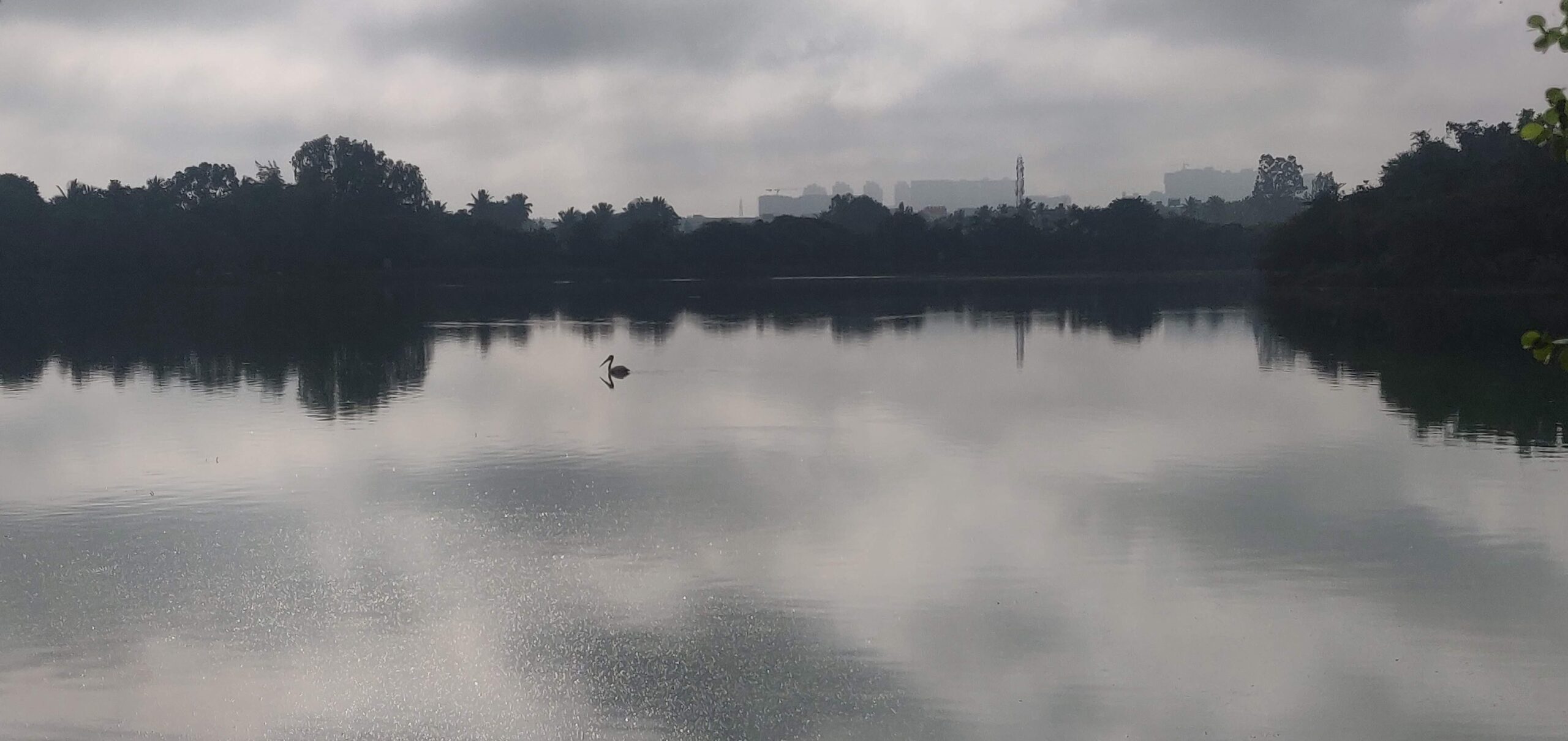sdfsdfffffffffffffffffffffffffffffffffff
A combination of rainwater harvesting and treated wastewater can easily provide more than the requirement of the city, says Dr T V Ramachandra.
This is a person who knows what he speaks. He has, for the past couple of decades and more, worked extensively and researched on many related areas of energy, urban planning, lakes and wetlands, solid waste management and many more. Dr T V Ramachandra, who is with the Centre for Ecological Sciences, IISc is a recipient of the Parisara award by the government of Karnataka, the Envis award of the MoEF many times, and other honours. He has published over 200 papers, 14 books and collaborated on many.
He has been warning residents and town planners about the crisis now facing Bengaluru, both the water scarcity and the heat. He has been calling for planned urbanisation that takes into consideration the environmental health of the region. Mini forests, connected lakes, tertiary treated waste water to recharge lakes, strict measures to check heavy metal contamination of water, these are a few of the measures the professor has been advocating for. But beyond a few articles in media, nothing happened. The authorities failed to take action. Trees were cut, more cement and concrete heaped, lakes neglected and encroached, and bore wells indiscriminately dug.
The Garden City today is hot and dry. And continues to grow, beyond its holding capacity.
With water scarcity hitting the city very hard and bringing on some negative publicity, efforts have been on to damage control. We have heard the authorities assuring there is enough water till the monsoons. That is, contrary to the experience on ground, in many places.

Let’s hear what the professor has to say, in an interview with TEL. Excerpts:
Why haven’t the successive governments bothered to revive the lakes and their interconnectivity, despite so much scientific data pointing to that as the first step to sustaining water requirements?
TVR: Lack of knowledge may be the reason. None of the present decision-makers use scientific data for planning and management of resources. The bureaucrats with a colonial mindset are interested in large-scale projects than sustaining water in a decentralised way.
Is it ripe time for citizen groups to come out and demand that long term solutions are taken?
TVR: Yes, unless sensible citizens collectively become active stakeholders, we will continue to witness unplanned developmental path ignoring sustainability of vital ecosystems (waterbodies, green spaces, etc.)
Are we over-relying on Cauvery?
TVR: YES. Mismanagement of forest ecosystems in the Cauvery catchment (irrespective of riparian state) leading to land degradation and deforestation has been threatening the water security. This is evident from the conversion of perennial streams to intermittent or seasonal streams. The catchment is losing its ability to retain water due to lowered infiltration or percolation of rainwater with land degradation.
Field-based studies reveal that waterbodies will have water throughout the year when the catchment has vegetation cover of native species greater than 60-65%. When the catchment is dominated with monoculture plantations (rubber, acacia, teak, eucalyptus, etc.), waterbodies had water for 6 to 8 months. When the catchment has vegetation cover less than 30%, then waterbodies had water only during monsoon.
Deforestation has been a serious threat, and the problem is aggravated by changes in the climate (due to global warming) with erratic rainfall and high intensity rainfall. Scanty rainfall in the region has threatened the water availability which is not sufficient to meet the demand of various states including that of Bangalore city.
The almost total concretisation of the city has contributed too to the situation. Can you please expound?
TVR: The approach adopted by our current decision makers is reactionary or ad-hoc, evident from false promises and assurances. Let’s look at some main points.
- 45% of Bangalore water demand is met by groundwater sources.
- There has been 1055% increase in paved surfaces with the significant loss of porous surfaces (88% loss of vegetation cover and 79% loss of waterbodies.
- The city landscape (of 740 sq.km) had 68% vegetation cover and less than 8% paved surfaces in 1973. Now the landscape has more than 86% paved surfaces while vegetation cover is less than 4%. Due to this, insufficient infiltration of precipitation for groundwater recharge, coupled with overexploitation, has aggravated the groundwater situation in the city.
- There is linkage between surface water bodies (lakes, tanks, etc.) and groundwater, evident from one of our study – showing groundwater at less than100 feet with a lake in the immediate vicinity. Removal of the lake led to the decline of groundwater table to 600 feet in five years. Today, after 23 years, people have dug borewell and even at 1800 feet there is no water, which highlights the serious consequences of converting porous landscape to paved surfaces.

Should we not have a ban on borewells and strict implementation of rainwater harvesting?
TVR: We need to see if we have enough water in the aquifers. In the absence of such quantifications, we are not sure whether we have enough water to meet the current demand.
The absence of inventories, monitoring, and mapping of groundwater resources and permitting large-scale extraction of groundwater through bore wells would be disastrous. The city landscape will take many decades to recover from such onslaughts (of over-exploitation). Considering the exponential rise in the number of bore wells in the city, we need to restrict and allow groundwater extraction only after ascertaining the quantity through robust scientific investigations.
The BWSSB Chairman has said there is enough drinking water to last till monsoon comes. That’s around 2100 mld. Is that feasible?
TVR: It is surprising to see such an irresponsible statement without understanding the implications of such irresponsible utterances, which would only aggravate conflicts in society (TN vs Karnataka). We should make bureaucracy accountable for mismanaging resources.
What role can tertiary treated water play? Why is it not being considered seriously?
TVR: Sustainable options to meet the burgeoning water demand in any rapidly urbanising landscape are (i) rainwater harvesting and (ii) reuse and recycling of wastewater.
The city receives annual rainfall of 700-850 mm, which amounts to 15 TMC, while the city requires 18 TMC of water. This means that if harvesting of rainwater is done, we can meet 70% of water demand. There are two options for rainwater harvesting (i) rooftop harvesting will provide additional 4-5 months water during lean seasons, (ii) the best option is to rejuvenate lakes and retain rainwater in the rejuvenated lakes. This helps in recharging groundwater.
For example, Sarakki lake was rejuvenated about 3 years ago and within 12 months the groundwater table increased by 300 feet. Now, when the major part of the city is facing water crisis, groundwater wells around Sarakki lake has enough groundwater and Sarakki lake also is full. Also, temperature in this region is lower by 2 degree C compared to other parts in the city. This highlights rejuvenation of all lakes in the city and storing rainwater would help in ensuring the water security.
The city generates 18 TMC of wastewater and treatment of wastewater through nature based solutions (integrating constructed wetlands and algal pond with the secondary treatment plant), as in Jakkur lake, would help in treating wastewater to tertiary level and we will have 16 TMC of treated water.
Thus, the city will have 31 TMC provided we manage resources prudently (rainwater harvesting and wastewater treatment). That is a definite surplus.
Tertiary treated water would certainly help in mitigating the acute water crisis being faced by the city. Treating wastewater (domestic) and filling lakes with tertiary treated water would certainly help in ensuring the sustenance of water.
The presence of heavy metals in the treated water and discharge of untreated or partially treated water are the reasons for citizens not being confident of treatment systems. This pathetic status is due to inefficiency and lack of integrity of institutions.
(As told to Jaya)
